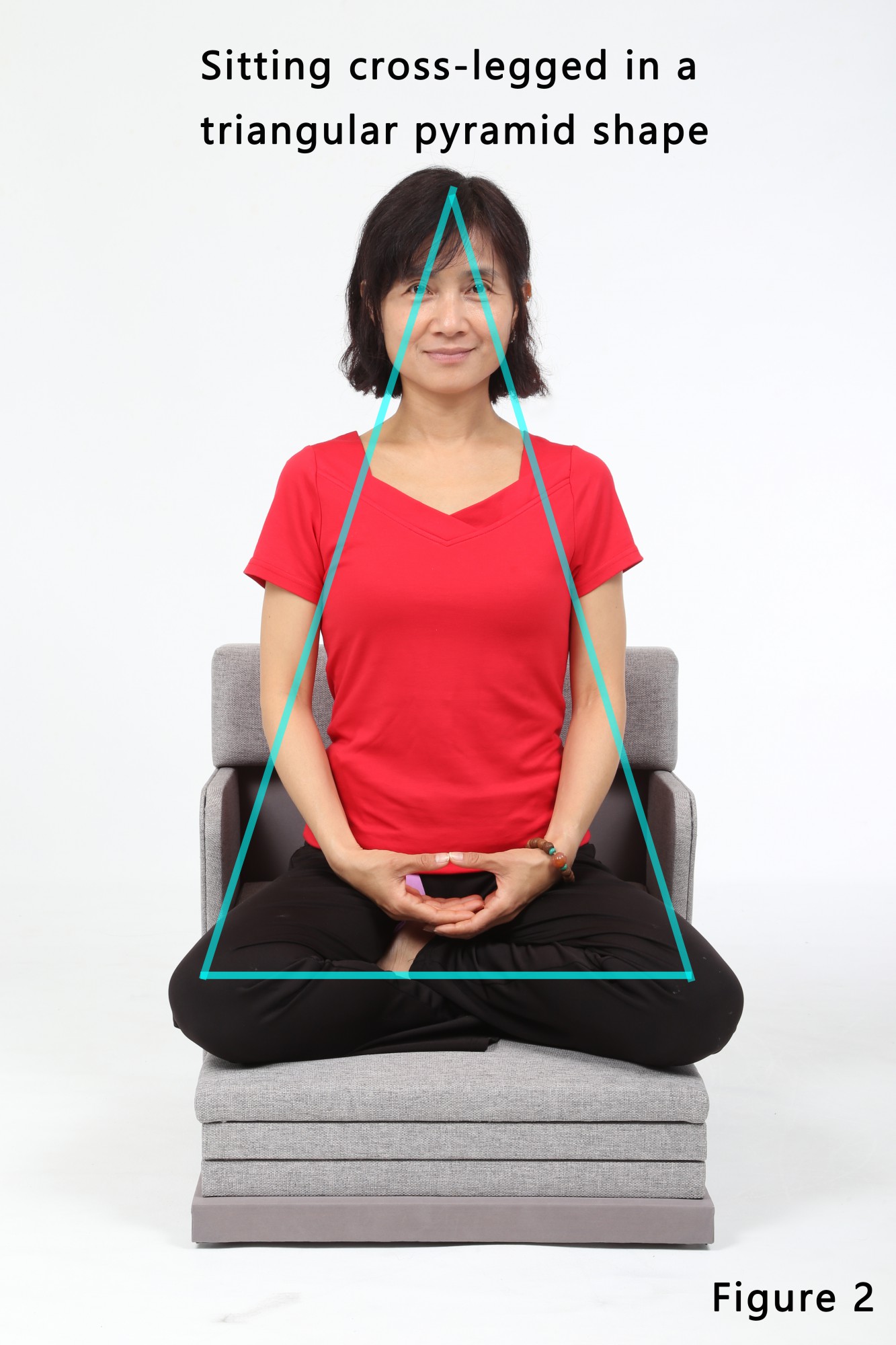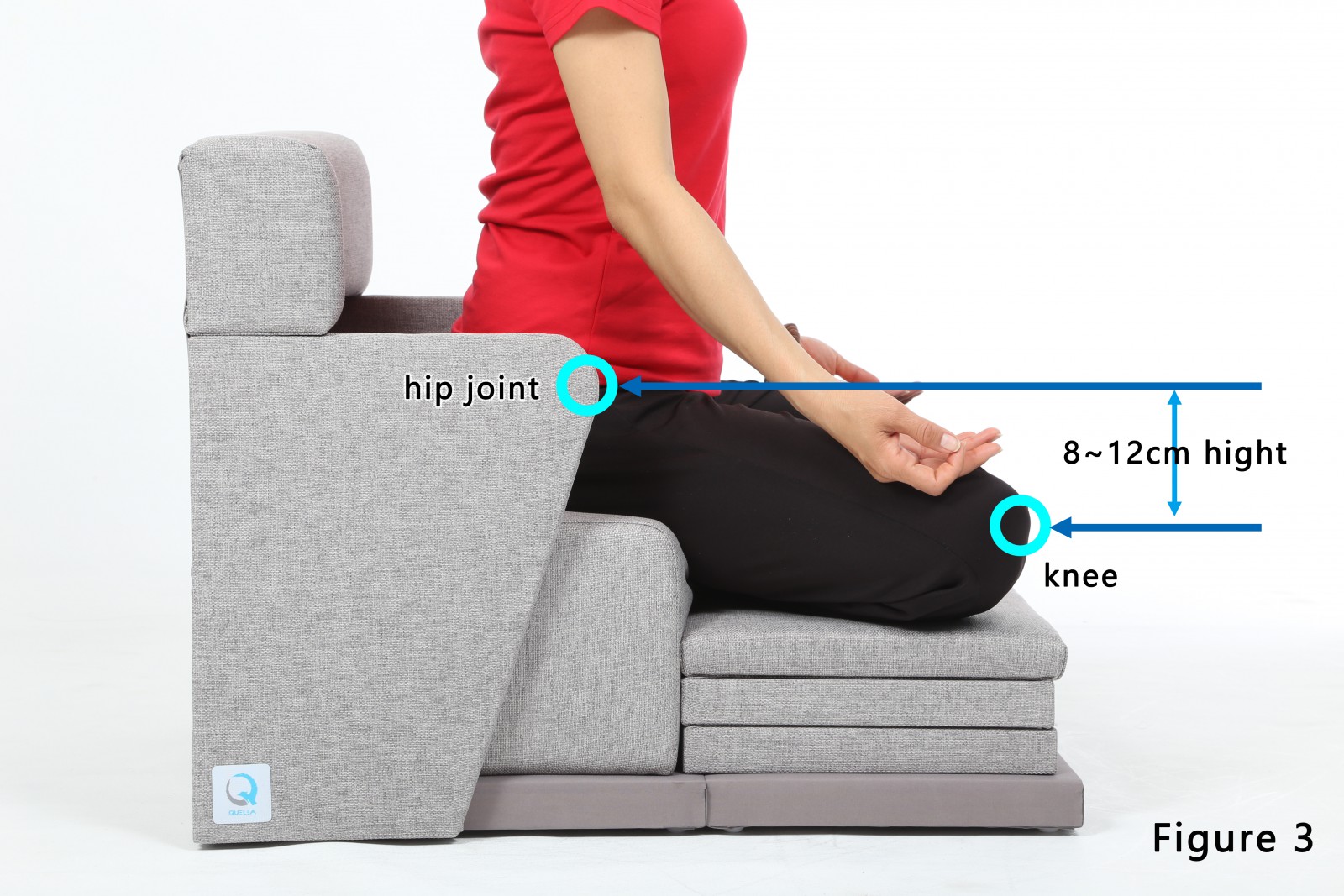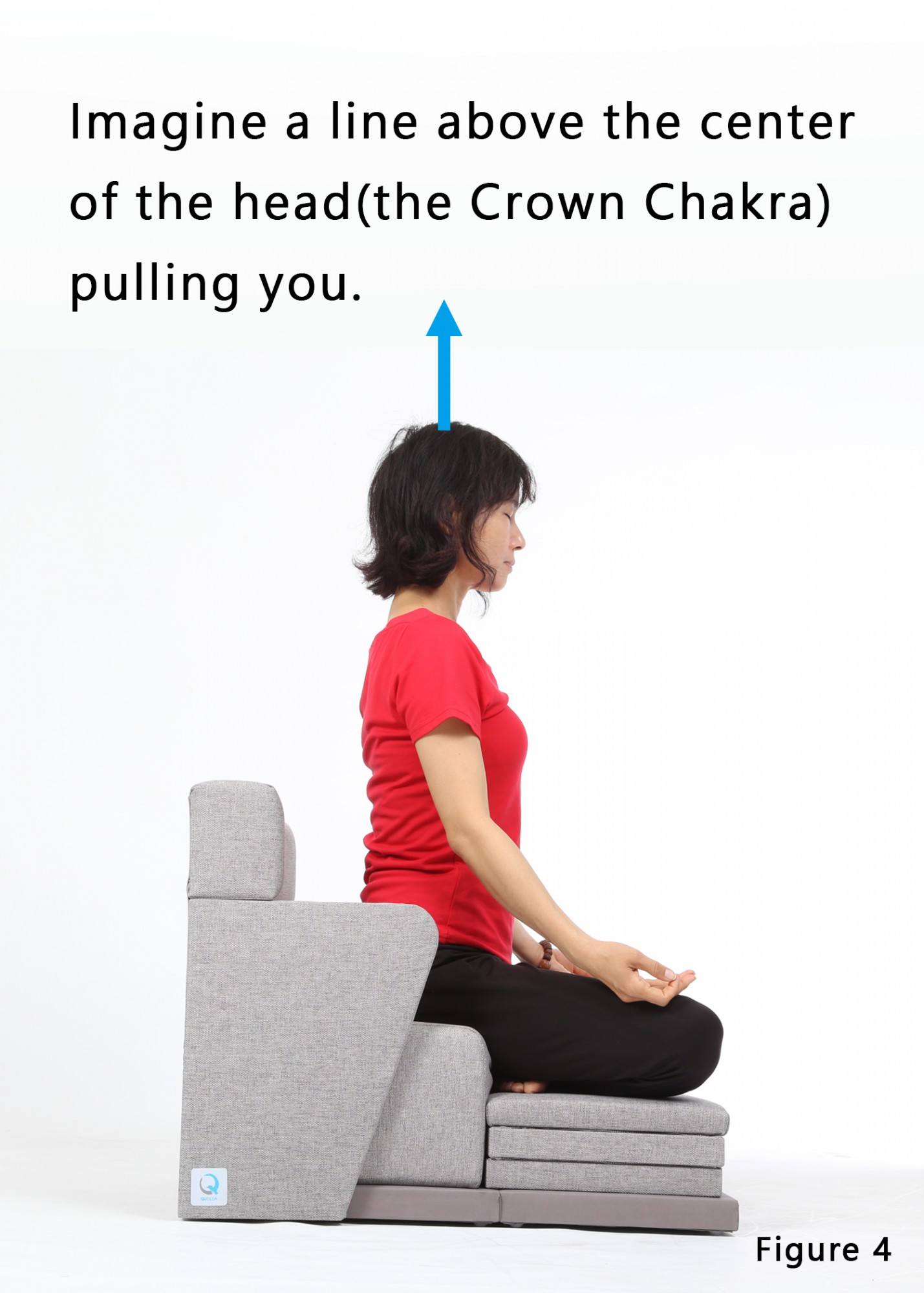Leg numbness during meditation
How to reduce numbness, pain and discomfort during meditation
Many beginners cannot continue meditation because they often feel numb and uncomfortable during meditation. However, this is a pity. Because there are too many benefits of sitting meditation, if you can't continue practicing, beginners often fail to appreciate the benefits it brings to the body, mind and soul.
Common causes of uncomfortable feet during meditation are as follows:
Beginners usually sit directly on a flat rug or yoga mat. This sitting position causes the weight of the body to fall on the oppressed lower limbs (such as hips and legs), resulting in poor blood circulation and prone to foot numbness. (figure 1)Some people believe that supporting the leg during meditation can improve leg numbness. In fact, this does not have much effect, because the weight of the body is still directly pressed on the lower limbs, so it will still cause uncomfortable conditions such as foot numbness and pain. (figure 1)
.jpg)
Tilt back and forth or left and right when meditating. When the feet are crossed, the weight of the body is concentrated at the intersection of the feet. These can cause numbness and discomfort in the feet.
When using a seat cushion, make sure that the height, hardness and air permeability of the seat cushion are suitable for you. Everyone is different in body shape and height, and cushions on the market are usually either too soft or too hard. If the cushions are too soft, they may sink the body and cause back pain. If it is too hard, it may cause hip pain or inability to sit for long periods of time. If the fabric of the cushion is not breathable, especially in summer, it will make the skin uncomfortable. These reasons will affect the quality of meditation.
Can I sit upright during meditation instead of sitting cross-legged?
You may ask: "Cross-legged meditation is too troublesome. Can I sit upright without cross-legged?" Of course, there are many meditation postures, not only sitting, but even sleeping dream yoga meditation, and walking dynamic meditation, but why 90% of meditations are sitting cross-legged?
That's because when a person sits cross-legged, the body structure is in a triangular pyramid shape. (Figure 2) Meditation in this posture is the easiest way to concentrate and settle down. In addition, you will find that if you can improve the uncomfortable condition of your feet, sitting cross-legged will be better than sitting, and it will be easier to concentrate and get the best meditation process.

2 ways to relieve discomfort symptoms such as foot numbness during meditation
When sitting cross-legged, the hip joint is 8-12 cm higher than the knee. No matter what kind of cross-legged position is adopted, such as quarter lotus position, half lotus position, lotus position, Burmese position...etc. If the hip joint is about 8-12 cm higher than the knee (Figure 3), the numbness can usually be reduced by 80%. But because everyone has different body types and heights, and the meditation postures used by each person are also different, it is recommended to choose a meditation chair or cushion that can adjust the height so that the hip joints will be higher than the knees to reduce the numbness of the feet during meditation.

Keep your body straight
Check whether your body is leaning forward or backward, because the bent posture will make the weight of the lower limbs uneven. Sometimes meditators use pillows as cushions, but the pillows are too soft and sink when sitting down. The height of the pillow cannot be adjusted, making it easy for the body to bend over to maintain balance. Coupled with sitting on a pillow on a soft bed, it is easier to lean back or forward, so you will soon feel uncomfortable and give up and fall asleep in bed. In this way, the practice of meditation is also interrupted, and the habit of meditation cannot be cultivated.
There is a hint to improve forward or backward leaning. When sitting cross-legged, imagine a line above the center of the head (the Crown Chakra) pulling you. Your body will move upward. At this time, your body will naturally straighten. You can even feel the power of opening the central energy channel (Sushumna), making it easier for you to enter the state of meditation (Figure 4).

From sitting upright to sitting cross-legged
Beginners of meditation can take a step-by-step approach, from sitting upright slowly to sitting cross-legged. (Figure 5)
First meditate in a sitting upright position. As the meditation time increases, slowly lower the height of the cushion to allow the body to slowly adapt to the cross-sitting position. Beginners can gradually increase the time to meditate when they practice sitting upright to sitting cross-legged. When it is no longer difficult to sit cross-legged, you will find that energy is more easily concentrated in the body, and it is easier to enter concentration. No matter what kind of meditation you are practicing, it may take some months for others to enter the state of meditation, and you can get the best concentration in meditation through the correct meditation posture, and achieve results faster than others. The above is the experience sharing of all teachers in teaching meditation.
cs5_%E9%A0%81%E9%9D%A2_04.jpg)